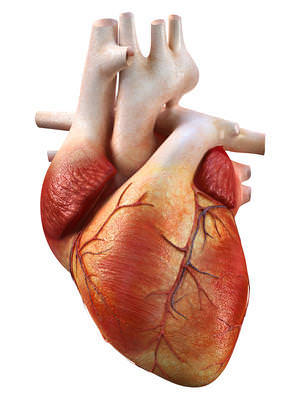 Researchers at King’s College London have for the first time highlighted the natural regenerative capacity of a group of stem cells that reside in the heart. This new study shows that these cells are responsible for repairing and regenerating muscle tissue damaged by a heart attack which leads to heart failure.
Researchers at King’s College London have for the first time highlighted the natural regenerative capacity of a group of stem cells that reside in the heart. This new study shows that these cells are responsible for repairing and regenerating muscle tissue damaged by a heart attack which leads to heart failure.
The study, published in the journal Cell, shows that if the stem cells are eliminated, the heart is unable to repair after damage. If the cardiac stem cells are replaced the heart repairs itself, leading to complete cellular, anatomical and functional heart recovery, with the heart returning to normal and pumping at a regular rate.
By revealing this robust homing mechanism, which causes cardiac stem cells to home to and repair the heart’s damaged muscle, the findings could lead to less invasive treatments or even preventative measures aimed at maintaining or increasing the activity of the heart’s own cardiac stem cells.
According to study authors Dr. Georgina Ellison and Professor Bernardo Nadal-Ginard, “In a healthy heart the quantity of cardiac stem cells is sufficient to repair muscle tissue in the heart. However, in damaged hearts many of these cells cannot multiply or produce new muscle tissue. In these cases it could be possible to replace the damaged cardiac stem cells or add new ones by growing them in the laboratory and administering them intravenously.”
Dr Ellison added: ‘Understanding the role and potential of cardiac stems cells could pave the way for a variety of new ways to prevent and treat heart failure. These new approaches involve maintaining or increasing the activity of cardiac stem cells so that muscle tissue in the heart can be renewed with new heart cells, replacing old cells or those damaged by wear and tear.
‘The cardiac stem cells naturally home to the heart because the heart is their home — they know to go there. Current practices involve major operations such as injection through the heart’s muscle wall (intramyocardial) or coronary vessels (intracoronary). The homing mechanism shown by our research could lead to a less invasive treatment whereby cardiac stem cells are injected through a vein in the skin (intravenously).’
Professor Nadal-Ginard added: ‘Although an early study, our findings are very promising. Next steps include clinical trials, due to start early 2014, aimed at assessing the effectiveness of cardiac stem cells for preventing and treating heart failure in humans.’
Source: Georgina M. Ellison, Carla Vicinanza, Andrew J. Smith, Iolanda Aquila, Angelo Leone, Cheryl D. Waring, Beverley J. Henning, Giuliano Giuseppe Stirparo, Roberto Papait, Marzia Scarfò, Valter Agosti, Giuseppe Viglietto, Gianluigi Condorelli, Ciro Indolfi, Sergio Ottolenghi, Daniele Torella, Bernardo Nadal-Ginard. Adult c-kitpos Cardiac Stem Cells Are Necessary and Sufficient for Functional Cardiac Regeneration and Repair. Cell, 2013; 154 (4): 827 DOI: 10.1016/j.cell.2013.07.039











